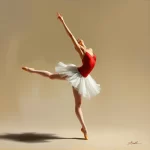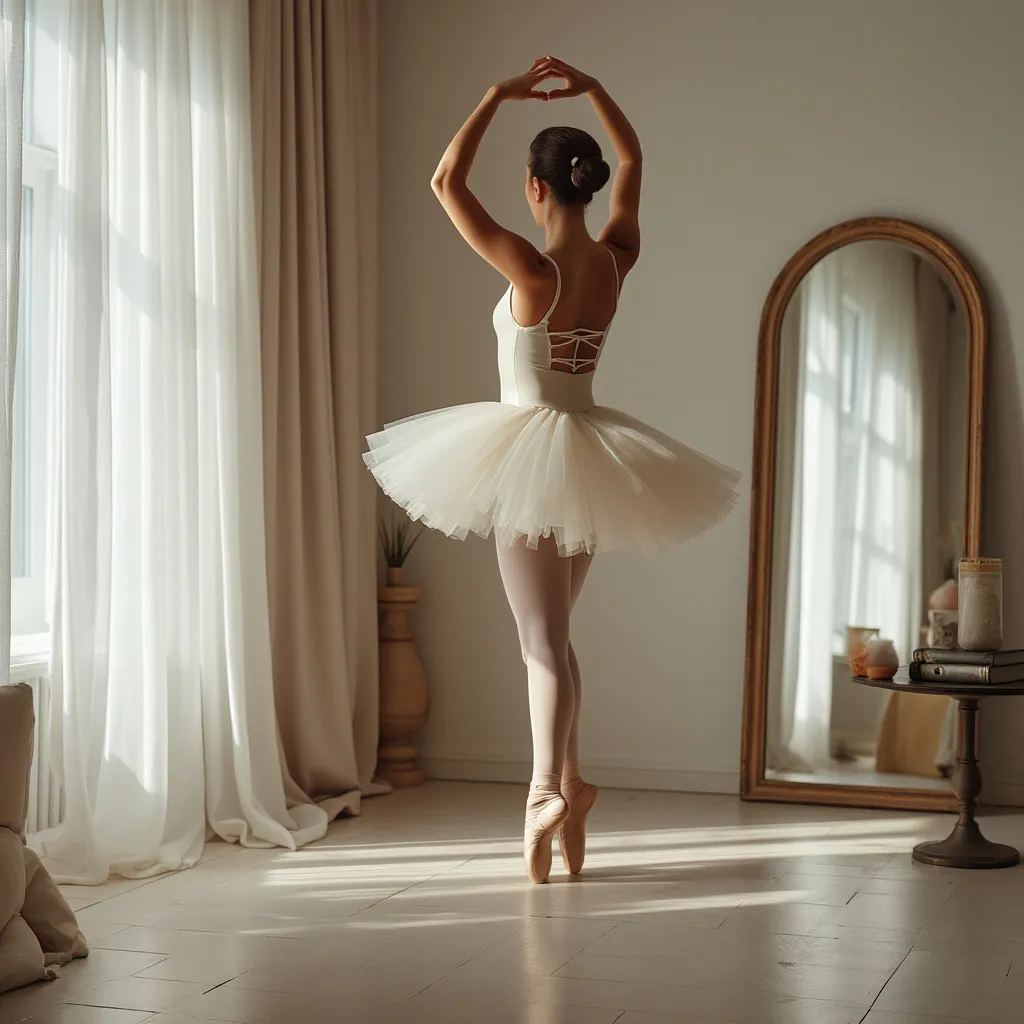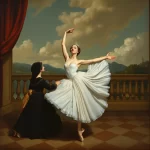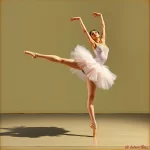The Golden Age of Russian Ballet: The Imperial Ballet and the Ballets Russes

Introduction
The Golden Age of Russian Ballet is a term that evokes images of unparalleled artistry, innovation, and cultural significance. This era, spanning the late 19th and early 20th centuries, saw the rise of two monumental institutions: the Imperial Ballet and the Ballets Russes. These organizations not only revolutionized ballet as an art form but also left an indelible mark on global culture. This article delves into the history, key figures, and lasting impact of these two iconic ballet companies.
The Imperial Ballet: The Foundation of Russian Ballet
Origins and Early Development
The Imperial Ballet, also known as the Mariinsky Ballet, was founded in 1738 by Empress Anna of Russia. Initially established to entertain the Russian court, the company quickly evolved into a premier institution for ballet training and performance. The Imperial Ballet School, now known as the Vaganova Academy of Russian Ballet, was instrumental in developing the technical prowess and artistic expression that would define Russian ballet.
Key Figures and Contributions
Several key figures played pivotal roles in the development of the Imperial Ballet:
- Marius Petipa: Often referred to as the “father of classical ballet,” Petipa served as the principal choreographer of the Imperial Ballet for over 50 years. His works, including “The Sleeping Beauty,” “Swan Lake,” and “The Nutcracker,” remain cornerstones of the classical ballet repertoire.
- Lev Ivanov: Petipa’s assistant and a brilliant choreographer in his own right, Ivanov is credited with choreographing the iconic “white acts” of “Swan Lake” and the “Snowflakes” scene in “The Nutcracker.”
- Enrico Cecchetti: An Italian ballet master who worked with the Imperial Ballet, Cecchetti developed a rigorous training method that emphasized strength, flexibility, and precision. His techniques are still widely taught today.
Artistic Achievements
The Imperial Ballet’s contributions to the art form are manifold:
- Technical Mastery: The company set new standards for technical excellence, with dancers known for their impeccable technique and expressive artistry.
- Choreographic Innovation: Petipa and his contemporaries created a vast repertoire of ballets that combined intricate choreography with compelling storytelling.
- Cultural Influence: The Imperial Ballet’s productions were lavish spectacles that showcased Russian culture and artistry, influencing ballet companies worldwide.
The Ballets Russes: A Revolutionary Force
Formation and Early Years
The Ballets Russes was founded in 1909 by Sergei Diaghilev, a visionary impresario who sought to bring Russian art and culture to the world stage. Unlike the state-supported Imperial Ballet, the Ballets Russes was a private enterprise that operated primarily in Western Europe. Despite its relatively short lifespan (1909-1929), the company had a profound impact on the world of ballet.
Key Figures and Contributions
The Ballets Russes attracted some of the most talented artists of the time:
- Sergei Diaghilev: The driving force behind the company, Diaghilev was a masterful curator who brought together choreographers, composers, designers, and dancers to create groundbreaking productions.
- Michel Fokine: The company’s first principal choreographer, Fokine revolutionized ballet by emphasizing dramatic expression and integrating all elements of production—music, set design, and costume—into a cohesive whole.
- Vaslav Nijinsky: A legendary dancer and choreographer, Nijinsky’s performances and avant-garde choreography, such as “The Rite of Spring,” pushed the boundaries of ballet and shocked audiences.
- Igor Stravinsky: The composer of several iconic Ballets Russes scores, including “The Firebird,” “Petrushka,” and “The Rite of Spring,” Stravinsky’s music was integral to the company’s innovative productions.
Artistic Achievements
The Ballets Russes was known for its bold artistic vision and willingness to take risks:
- Innovative Choreography: The company introduced new choreographic styles that broke away from classical conventions, incorporating elements of modern dance and folk traditions.
- Collaborative Artistry: Diaghilev’s collaborations with leading artists of the time, including Pablo Picasso, Henri Matisse, and Coco Chanel, resulted in visually stunning productions that were as much about art and design as they were about dance.
- Global Influence: The Ballets Russes toured extensively, bringing their revolutionary productions to audiences around the world and inspiring a new generation of dancers and choreographers.
Comparing the Imperial Ballet and the Ballets Russes
Artistic Vision
While both companies were dedicated to the art of ballet, their artistic visions were distinct:
- Imperial Ballet: Focused on preserving and perfecting classical ballet traditions, with an emphasis on technical mastery and grand, narrative-driven productions.
- Ballets Russes: Emphasized innovation and experimentation, often challenging traditional notions of ballet and incorporating diverse artistic influences.
Impact on Ballet
Both companies had a lasting impact on the world of ballet:
- Imperial Ballet: Established the foundation of classical ballet technique and repertoire, which continues to be the standard for ballet companies worldwide.
- Ballets Russes: Pushed the boundaries of what ballet could be, inspiring future generations of choreographers to explore new forms of expression and collaboration.
FAQ
What is the significance of the Golden Age of Russian Ballet?
The Golden Age of Russian Ballet is significant because it marked a period of unparalleled artistic achievement and innovation in the world of ballet. The Imperial Ballet and the Ballets Russes set new standards for technical excellence, choreographic creativity, and collaborative artistry, influencing ballet companies and artists worldwide.
Who were some of the key figures in the Imperial Ballet?
Key figures in the Imperial Ballet included Marius Petipa, Lev Ivanov, and Enrico Cecchetti. Petipa is often referred to as the “father of classical ballet” and created many of the company’s most famous works. Ivanov was a brilliant choreographer known for his contributions to “Swan Lake” and “The Nutcracker,” while Cecchetti developed a rigorous training method that is still widely taught today.
What made the Ballets Russes different from the Imperial Ballet?
The Ballets Russes differed from the Imperial Ballet in several ways. While the Imperial Ballet focused on preserving and perfecting classical ballet traditions, the Ballets Russes emphasized innovation and experimentation. The Ballets Russes also operated as a private enterprise and collaborated with leading artists from various disciplines, resulting in visually stunning and groundbreaking productions.
How did the Ballets Russes influence modern ballet?
The Ballets Russes influenced modern ballet by pushing the boundaries of what ballet could be. The company’s innovative choreography, collaborative artistry, and willingness to take risks inspired future generations of choreographers to explore new forms of expression and collaboration. The Ballets Russes also introduced new choreographic styles that incorporated elements of modern dance and folk traditions.
What are some of the most famous works created by the Imperial Ballet?
Some of the most famous works created by the Imperial Ballet include “The Sleeping Beauty,” “Swan Lake,” and “The Nutcracker.” These ballets, choreographed by Marius Petipa and his contemporaries, remain cornerstones of the classical ballet repertoire and continue to be performed by ballet companies worldwide.
Conclusion
The Golden Age of Russian Ballet, epitomized by the Imperial Ballet and the Ballets Russes, was a period of extraordinary artistic achievement and innovation. The Imperial Ballet set new standards for technical excellence and choreographic creativity, while the Ballets Russes pushed the boundaries of what ballet could be through its bold artistic vision and collaborative approach. Together, these two institutions transformed ballet into a global art form and left a lasting legacy that continues to inspire dancers, choreographers, and audiences around the world.





